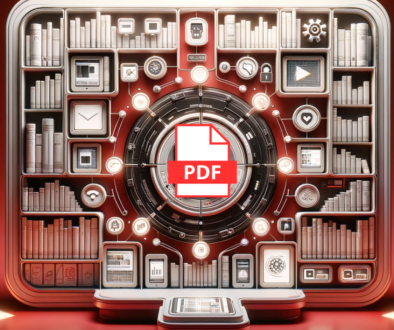How to Convert Web Content to PDF: Tools and Techniques
In the digital age, sharing and preserving web content in a reliable and universally accessible format is crucial. PDF (Portable Document Format) has emerged as a popular choice for converting web content into a stable and versatile format that is easily viewed, printed, stored, and shared across different devices and platforms. This article will explore various tools and techniques for converting web content to PDF.
Print to PDF
One of the simplest ways to convert web content to PDF is by using the built-in print functionality in web browsers. Most modern browsers offer the option to “Print to PDF” directly from the print dialog. This method captures the current web page and converts it into a PDF document, including text, images, and sometimes formatting. The issue with this function is that when you squish and squash a site into a page-sized format, it tends not to fit. Often, some CSS or Javascript elements will disappear. This option is really best if you are just trying to save text and addresses.
Browser Extensions
Several browser extensions facilitate quick and efficient web-to-PDF conversions. These extensions provide additional features and customization options, allowing users to capture specific webpage sections, remove advertisements, or adjust the layout before generating the PDF. Popular extensions include “Save as PDF” for Google Chrome and “Print Friendly & PDF” for Firefox. These were likely built to mitigate the issues of option 1.
Online Conversion Tools
Numerous online tools specialize in converting web content to PDF. These platforms typically require users to enter the webpage URL they want to convert and then generate a PDF version. Online conversion tools are convenient for one-time conversions, but they may have limitations regarding the number of pages, file size, or privacy concerns, as the content is processed on external servers. Some premium tools do a fantastic job.
Headless Browsers
Developers often require programmatic access to convert web content to PDF for automation or integration purposes. Headless browsers, such as Puppeteer and Selenium, provide a solution by simulating a web browser without a graphical user interface. Developers can use these tools to navigate webpages, capture their content, and save it as a PDF file programmatically. This is only recommended for some users.
HTML to PDF Libraries
For more advanced scenarios, libraries and frameworks enable web content conversion directly from HTML to PDF. These libraries, such as wkhtmltopdf, PrinceXML, and Dompdf, allow developers to generate PDF documents by rendering HTML and CSS code. They offer extensive customization options, including handling complex layouts, adding headers and footers, and including interactive elements. Only programmers are likely to understand these frameworks.
Content Management Systems (CMS) Plugins
If you manage a website through a CMS like WordPress or Drupal, you can find plugins that simplify converting web content to PDF. These plugins often integrate with the CMS’s editor, enabling users to generate PDF versions of articles, blog posts, or entire web pages with just a few clicks. Popular PDF plugins for WordPress include WP PDF Generator and PrintFriendly & PDF. Non-technical users will prefer this step as long as they can navigate WordPress. It only works if you are the admin of the page.
API Services
For businesses with high-volume or specialized PDF conversion requirements, API services provide a scalable and customizable solution. Companies like PDFmyURL and PDFShift offer RESTful APIs that developers can integrate into their applications or workflows. These APIs allow for on-demand conversion, offer advanced features like watermarking or password protection, and often provide comprehensive documentation and support.
Choosing Options
As you begin converting web content to PDF, it’s essential to consider factors like the desired level of customization, automation requirements, and security concerns. The user’s technical experience also comes into play. Each tool and technique discussed here offers its features and capabilities, so it’s essential to evaluate them based on your specific needs and capabilities.
Converting web content to PDF is a valuable skill in the digital world. Whether you’re an individual user looking to save articles for offline reading or a developer building a robust PDF generation system, the tools, and techniques mentioned above provide a range of options to meet your requirements. With the right approach, you can effortlessly convert web content to PDF and ensure accessibility, portability, and longevity.
Where do the PDFs go next?
What will you do with all of these PDFs? Where will you show your gathering treasures? That’s where Resource Center comes in. Your PDFs can be privately stored in our system, categorized, and then publicly displayed via customizable widgets.




